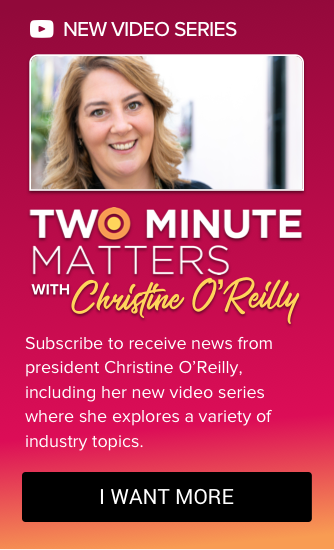You’ve probably heard the expression, “If you always do what you’ve always done, you always get what you’ve always got.” It’s a problem that pervades every risk-averse culture, and pharma is definitely not immune. But if we want to reach people in the attention economy, we have to do things differently. Here are three strategies to help.
(Bad) Lessons from Hollywood
First, let's not be too hard on ourselves—pharma is definitely not the only place where "tried and true" is a seductive way to approach a project. Major Hollywood movie studios are another perfect example. They test concepts, just as we do in the pharmaceutical industry. They do focus groups. They copy what was done last year. They remake a popular movie from back in the day (or even five years ago). They may combine concepts from two previously successful films so they can say, “It’s X meets Y!” They often script and film multiple endings and then test the various options with audiences, to make sure they aren't delivering a product that disappoints. All these measures explain why many big-budget Hollywood movies end up being similar, predictable and boring. To make something interesting means taking a risk. Risk, when a movie needs to be a blockbuster, is a non-starter.
Most pharmaceutical marketers will admit they're also guilty of doing “the same old thing.” We're an industry that's highly regulated, and it takes guts and sweat to break away from what's already received approval (or at least didn't ruffle any feathers). What's been approved becomes the new standard. The new standard becomes expected.
In pharma there's also heavy investment in product development and sales reps. Marketing is the all-important (but often under-resourced) life line that ties them together and, ultimately, to the audience we need to influence. We aren't necessarily given the time or the tools to challenge the status quo, and the risk of failure has huge consequences for the companies we work for. We need our blockbusters, too.
Opportunities to do things differently
But same old isn't serving us well. Here's an example. Every brand develops an e-detail aid for their sales reps to use because the company processes require them to have one and it’s often hard to challenge this system. But the user data likely shows that reps aren’t using these tools with customers as much as you would like them to, or enough to justify the cost of creating the tool in the first place.
When a marketing channel or tool is pre-established in this way, it means that the message is developed to fit the piece, instead of the other way around. What if we rethought things in customer-centric terms? If we thought first about how our customers might want to hear our messages, would the end results be different or better? As Steve Jobs, Apple’s late CEO, put it, “You’ve got to start with the customer experience and work back toward the technology, not the other way around.”
Here are three strategies to help you start with your customer and avoid going down the same old marketing path.
-
Develop customer personas
Spend the time and invest the resources to develop a better understanding of your customers’ thinking by developing customer personas. A persona is a semi-fictional representation of your ideal customer based on real data and, where you don't have real data, assumptions that you can test. Your persona doesn't have to be perfect, but it needs to be the result of a disciplined process where, as much as possible, you're doing real research and refining your assumptions over time.
When you develop a persona, you're putting yourself in your customers’ shoes (and their minds) so you understand their habits, behaviours, motivators, interests, frustrations and challenges. Where do they get information? Who influences them? How do they use technology? What factors into their decision-making? When you understand their pain points, you can start identifying opportunities for your brand to uniquely impact and relieve these pains. When you understand how they make decisions, you're set up to influence that decision-making more effectively. We find ourselves talking about our personas by the names we've given them—they become real to us—which helps us always put them first when we're considering any approach to marketing.
In healthcare, we have both B2B and B2C personas, because sometimes we need to reach healthcare professionals, sometimes we need to connect with consumers and patients, and sometimes we need to influence both. This means one persona is rarely enough. But one persona is better than none!
Our May 1, 2019 Making Medicine Matter video event was all about personalization, including how to develop a healthcare persona.
-
Ask some questions. Then ask some more.
Our next strategy is about what to do when you've got your customers in front of you.
When you're doing market research, don’t just follow your question guide. The superficial answer to a standard question won't result in any "a-ha" moments for you, but if you listen carefully to the answers and use those answers to ask the next question, you'll get deeper, richer information. In some cases you'll learn "the why" behind their answer. In other cases the conversation will take an unexpected turn, revealing values that are important to your persona or pains that you didn't know about. This is where learnings lead to inspirations—which can lead you to develop solutions that both surprise and delight your customers.
Let's say you sold lawnmowers. Yes, you'll want to ask your existing customers what they want from your next model. But this will almost certainly yield predictable results: faster blades, a bigger grass catcher, more cutting-height options, lower engine noise, etc. But if you asked why they want faster blades and you learned, for example, that it's about being able to get the lawn mowed faster because most of your customers typically cut their grass in the hot afternoon hours, perhaps such an insight would lead you to prioritize development of an innovative shading device—maybe a built-in umbrella.
-
Don't play it safe.
The third strategy is about taking risks, because sometimes you have to bravely step outside what your customers are saying to do something new.
I'm not saying you should forget about the first two strategies I just described. Well-researched and refined customer personas are the foundation of any relevant marketing program. Connecting directly with your customers to understand why they think and feel the way they do is critical to product development and campaign insights. But customers can only know and respond to what they've seen and used to date. If you rely too heavily on customer feedback or market research, you could be tying one hand behind your back—and it's the hand that would write down your most innovative ideas!
Limiting your options to the demands of your consumers isn't how the iPhone was developed. For readers closer to my age, the Sony Walkman is another great example. Sony did market research with their audience and asked them if they'd like to take their music with them on-the-go. They said no. (I can hear the gasps from those under-30.) The fact is, it was a foreign idea to them. Portable music? They'd never experienced it and they didn't recognize the potential. Sony didn't listen to the findings from their market research and the Walkman was born. Now we either can't remember a time when we couldn't pop in our ear buds and have music whenever and wherever we want, or can't believe we survived those silent years.
Coming out from behind the market research glass to try something no one has asked for is something we may only do a few times in our careers. How will we know if it's an idea that's worth the risk? I have a friend who used to work for Unilever's brands and he would sometimes refer to his "tummy test." When an idea was presented, either by an agency or his team, he'd do a literal gut-check. If if didn't "tingle in the tummy," as he put it, he always asked if it was too safe an idea—not fresh or brilliant enough—to achieve the desired impact.
Let's say we decide an idea has passed the "tummy test." What's next? Another friend, who was a brand manager at a pharma company that was experiencing consistently declining sales on a mature product, knew following the market research would just give them the same old results, so she sold a new idea up the chain. "Selling up" is an important skill for any brand manager to develop and a topic worthy of its own article, but very briefly, she put together a presentation that reviewed the research as a way of making the point that it was giving uninspired direction and then presented a new idea that no one had asked for. The bosses, not surprisingly, had cold feet. They asked her to do more research, but she said it would be a waste of $40K to prove what their first round of research had already shown. In the end, the bosses gave their blessing for the risk and the end result was positive sales growth for the first time in five years.
To sum up, we can avoid the curse of "same old, same old" in our healthcare marketing by starting with a deep understanding of the people we need to reach, staying curious so we ask the questions that will reveal the hidden truths behind their requests or behaviours, and, finally, never settling. If something doesn't pass the tummy test, it's worth the risk to try something new.
Looking for more insights and tips on healthcare marketing? Check out our Making Medicine Matter video event series and archives of past events.


